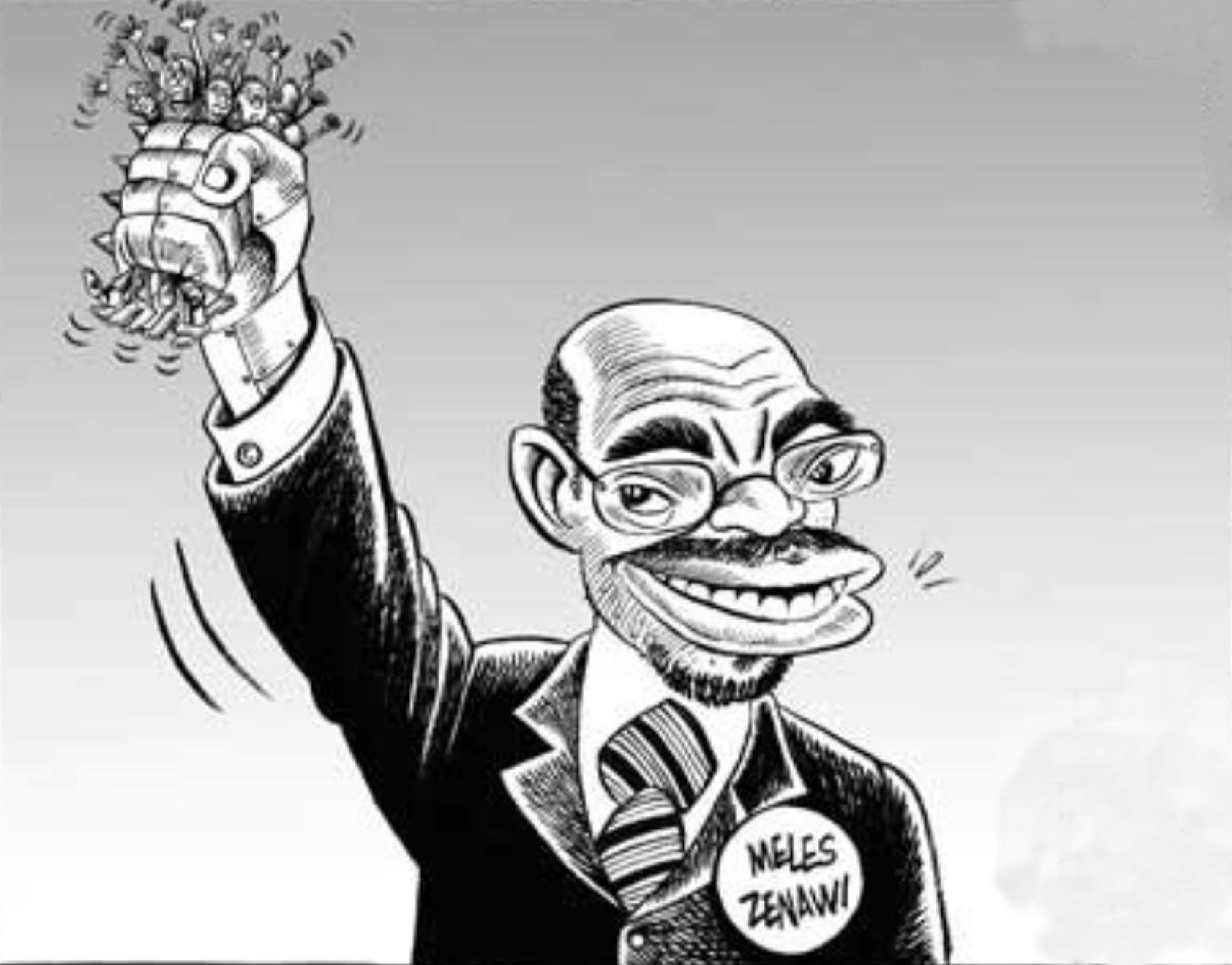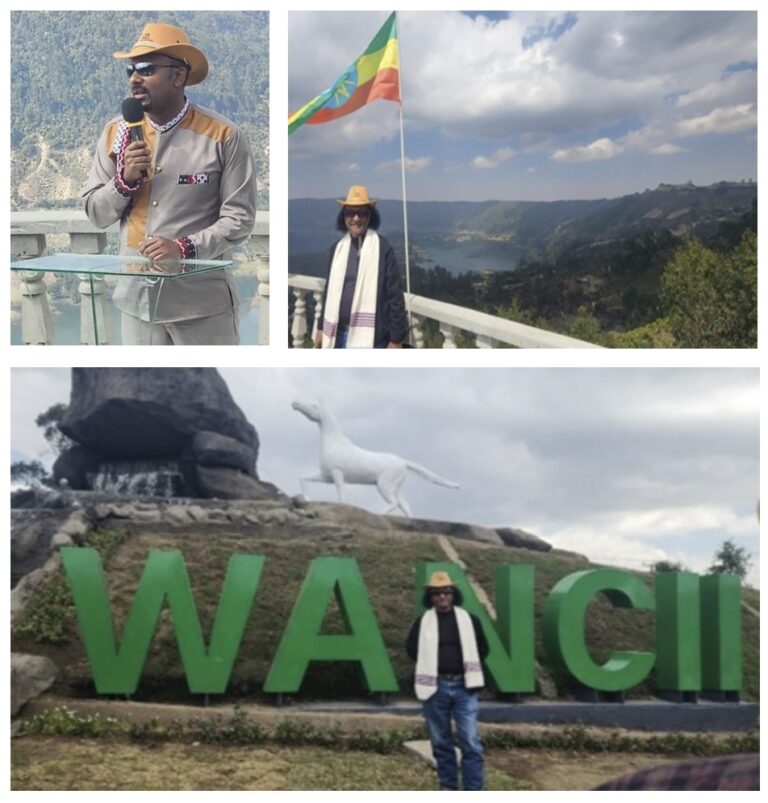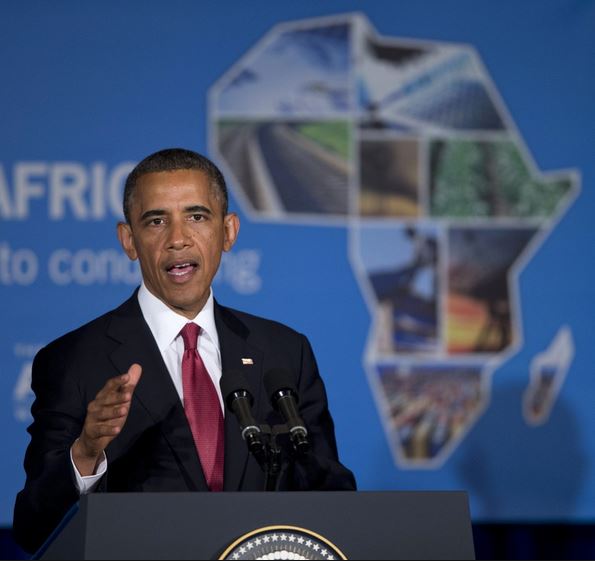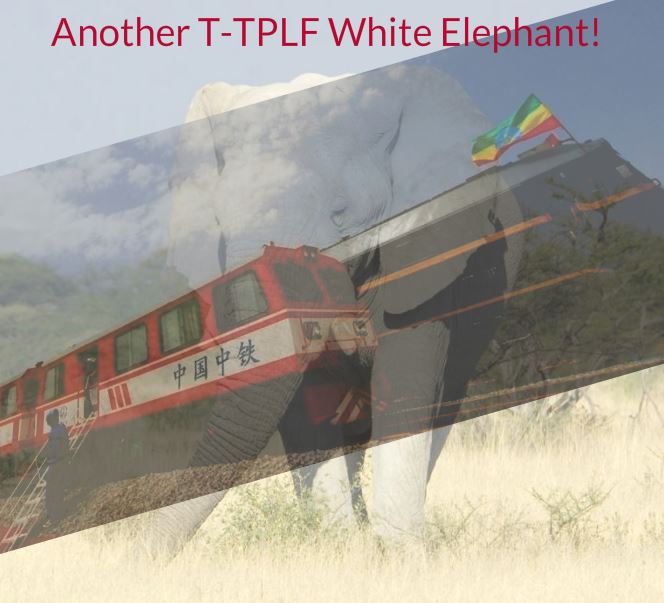Ethiopia-win-et: Deconstructing the T-TPLF’s Ethnic Federalism (Part I)
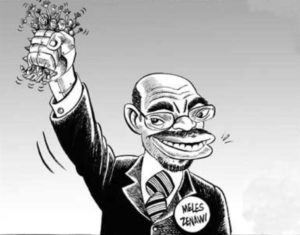
Introduction to the series
I am developing this multipart series of what I call “Deconstructing Ethnic Federalism in Ethiopia” (along with many other topical series to come) for several reasons. The Thugtatorship of Tigrean People’s Liberation Front (T-TPLF) has used its phony ideology of “ethnic federalism” to hoodwink and bamboozle Ethiopians into believing its system of ethnic apartheid supremacy is actually federalism. It is stunning how a group of high school and grammar school dropouts have been able to con a population of 100 million people into accepting their ethnic apartheid masters are actually their liberators.
In many of my previous commentaries, I have written polemically about liberating a prison nation of “nations, nationalities and peoples.” I have written about “The Poison of Ethnic Federalism in Ethiopia’s Body Politics.” More recently, I have written about The Bantustanization (Kililistanization) of Ethiopia by the T-TPLF in the name of ethnic federalism.
In this series, I am to debunk “ethnic federalism” and argue in favor of “classical federalism”, the theory and practice of governance based on divided sovereignty and the constitutional division of power between a national and sub-national governments, in a post-T-TPLF reconstruction period.
This series is partly inspired by Oromia regional president Lemma Megerssa’s recent call to the Ethiopian intelligentsia to go beyond cranking out “academic papers” and come down from their ivory towers and do what it takes to “save” Ethiopia from the T-TPLF. In his remarks at the “Amhara-Oromo Discussion Forum” in Bahr Dar, on November 4, 2017, Lemma made a very special plea: “To be educated and to be in service of country does not mean just to produce academic research papers. It also means to save your country, to contribute by finding ways of saving our country, coming up with creative ideas, spreading such ideas around. That is something expected more from our intellectuals than anyone else. That is what I think.”
Lemma issued his plea because, I suspect, he does not feel Ethiopian intellectuals are doing their part in the struggle against the 26-year-old T-TPLF apartheid system. I promised to respond to Lemma’s call and in this series (and many others to come) I aim to make my personal contribution to “saving” and rescuing Ethiopia from the clutches of the T-TPLF beast.
I join Lemma Megerssa in calling Ethiopian intellectuals to make their contributions to help defeat T-TPLF tyranny and establish a democratic society in Ethiopia under the rule of law. I urge an end to the deceptive intellectual culture of being a hero on the eve of victory (ye dil atbiya arbegna). The suffering Ethiopian people do not want fair-weather intellectuals who show up when the coast is clear, and the enemy has left the shores. They need intellectuals who are willing, able and ready to be the tip of the intellectual spear in fighting and defeating the ethnic apartheid T-TPLF regime today.
George Ayittey in his “Iron Law No. 5” explains, “You would think that with all our education and strings of diplomas, PhD’s, and titles, we would understand such basic concepts as democracy, oppression, rule of law, accountability, transparency , free and fair elections… A multitude of us sold off our conscience, integrity and principles to serve the dictates of barbarous regimes. As prostitutes, we aided and abetted – even partook of — the plunder, misrule and repression of the African people.”
The vast majority of Ethiopia’s intellectuals have chosen to bite their tongues, turn a blind and mute their lips to the suffering of their less fortunate brothers and sisters in Ethiopia. They say, “C’est la vie. That’s life, their life. I am having the time of my life.”
In June 2010, I wrote a commentary asking, “Where Have the Ethiopian Intellectuals Gone?” I urged Ethiopian intellectuals to exchange their armchairs for the public benches and leave their comfort zones of passivity and silence to become advocates of peaceful change and democracy in their homeland. As I reflect on that commentary seven years later, I realize that it was indeed an indictment, a pointed accusation of moral failure, against Ethiopian intellectuals, particularly in the Diaspora, who prefer to remain silent because they are afraid of economic or other retaliation by the T-TPLF.
I have always believed, long before I began my human rights advocacy some twelve years ago, that Ethiopia needed to be saved from the bogus ethnic federalism of the T-TPLF. But I thought someone else should do the heavy lifting on “saving” Ethiopia. Years later I asked myself, “If I don’t do my share of the heavy lifting, who will do it for me?”
As I have argued on many previous occasions, I believe Ethiopia’s intellectuals bear a special and compelling moral responsibility to come to the aid of their mother country and the younger generation and use their intellectual powers not only to help defeat a malignant thugtatorship but also to show greater, deeper and more creative involvement in addressing the diverse problems facing Ethiopia. They must be the architects of the New Ethiopia, or what Birtukan Midekssa used to call “the future country of Ethiopia”.
Second, at this stage in Ethiopia’s history, that is as the T-TPLF careens unstoppably towards the trash bin of history, it is vitally important to propose creative and innovative ideas for a post-T-TPLF Ethiopian reconstruction of a quarter of a century T-TPLF destruction. Gandhi’s maxim applies to the T-TPLF as it does to any other gang of criminals against humanity. “Remember that all through history, there have been tyrants and murderers, and for a time, they seem invincible. But in the end, they always fall. Always.”
There is no question whatsoever the T-TPLF will fall, and fall hard. That time is at hand.
But the TPLF thugs have done so much damage to the country that it will take at least a generation to right up things. Now is the time to invest our reserve of intellectual powers to imagine, design and create the future country of Ethiopia.
Third, I believe in the transformative power of education. The benighted leaders of the T-TLF have done their best to bring every Ethiopian to their own abysmal level of ignorance swirling in a vortex of hate. Ethiopia’s young people today need to be liberated from the darkness of T-TPLF tyranny and its ideology of hate, namely ethnic federalism. For Ethiopia’s youth, educational empowerment is the only way out of T-TPLF-imposed ignorance and hate. I know I can never compete with the T-TPLF’s cult of ignorance “nurtured by the false notion that democracy means that my ignorance is just as good as your knowledge,” to borrow a phrase from Isaac Asimov.
I have unbounded faith in Ethiopia’s “Cheetah Generation” (young people). As I have repeatedly written, I have total and unflagging confidence in Ethiopia’s young people as Ethiopia’s saviors from ethnic division, sectarianism, narrow-minded dogmatism. In my September 17, 2016 Amharic interview with Reeyot Alemu (begin clip at 14 minutes), I unapologetically defended my view on the redemptive destiny of Ethiopia’s youth. Only the Cheetah Generation can save Ethiopia. Not the has-been generation of mine. Not the timid intellectuals, nor the power-hungry and -thirsty politicians and self-appointed leaders.
But the youth cannot save Ethiopia armed only with hope, optimism and blind faith. Ethiopia’s young people must be fully armed with knowledge, not guns, in all fields of human endeavor if they are to succeed in creating the future country of Ethiopia.
Malcom X said, “Education is the passport to the future, for tomorrow belongs to those who prepare for it today.” Nelson Mandela added, “Education is the most powerful weapon which you can use to change the world.” On the other hand, ignorance is the most powerful weapon in the world to keep tyrants in power. Goethe remarked, “There is nothing more frightful than ignorance in action.” So, it is with the T-TPLF in Ethiopia today.
I want to play my part in educating Ethiopia’s youth to be intellectually armed and ready to fight against T-TPLF’s ethnic federalism and internal colonialism. I believe Ethiopia’s young people need to be armed to the teeth (to the mind) with interdisciplinary knowledge and be united in their common purpose that is Ethiopia. With the fire of Ethiopiawinet burning in their hearts, minds and souls, they can never be defeated by any tyrant present or future.
Education and freedom are vitally interrelated. Alan Bloom in his book, “The Closing of the American Mind”, argued that American “higher education has failed democracy and impoverished the souls of today’s students.” I tremble for Ethiopia’s youth when I reflect on what substandard higher education provided by a gang of ignorant thugs has done to their minds.
For Ethiopians who have lived their lives under imperial, military and bush-thug tyranny, freedom is merely an idea, an aspiration, a pipe dream. To not be able to speak one’s mind, to not be able to share ideas, to be ever watchful of the invisible eye, to live in fear and to be treated as second, third and fourth-class citizens is to live a subhuman existence.
Freedom is a many-splendored thing, but is also very delicate. Ronald Reagan said, “Freedom is a fragile thing and is never more than one generation away from extinction. It is not ours by inheritance; it must be fought for and defended constantly by each generation, for it comes only once to a people. Those who have known freedom and then lost it have never known it again.”
I believe freedom lost for one generation can be regained for succeeding generations. Freedom does not come from the barrel of a gun, it comes from a well-informed and educated citizenry. It is the moral duty of the free to stand up and fight for the unfree.
As a constitutional lawyer, political scientist and relentless human rights advocate, I believe I can make a unique contribution to the struggle for freedom, democracy and human rights in Ethiopia. I believe I have made a modest contribution in this regard over the past twelve years. I am supremely gratified that countless Ethiopian youth have found my weekly commentaries over the past decade informative, instructive, enlightening and inspiring.
I realize that many of my commentaries may not be easily understandable or digestible for those who may not have sufficient English language proficiency. I am also aware that the ideas, concepts and imageries discussed in this series and my other commentaries may be difficult for some to grasp. Learning something complex and complicated is rarely an easy task.
I do not believe in “dumbing down” and deliberately oversimplifying complex things for popular consumption. As I have previously stated, I do not write my weekly commentaries to entertain my readers. I write to deliver serious messages. I hope my readers will understand.
In all of my commentaries, I aim to challenge Ethiopia’s youth to aim high and dream the impossible Ethiopian dream, “to run where the brave dare not go/To right the unrightable wrong/ To follow that star/No matter how hopeless/ No matter how far/To fight for the right/ Without question or pause/To be willing to march,/ march into hell/For that heavenly cause.” That heavenly cause known as ETHIOPIA.
Lemma recently said, “robbers and thieves who have made their fortunes out of exploiting Oromia won’t stop their war here. They will use other tactics to advance their undeserved benefits. This wounded beast won’t sleep. I don’t believe wounding it is enough… We have to make sure that it is known for what it is and brought to justice and tried for their [criminal] acts.”
The “wounded beast” has gone rabid. The “wounded beast” is in turmoil, confusion and roiling in internal strife. It is on the warpath and it will destroy everything in its path before it eventually self-destructs. That is why the intellectual struggle against the T-TPLF and its system of internal colonialism and ethnic apartheid must be waged day and night until victory is secured.
Why I am challenging the T-TPLF’s ethnic federalism
I have decided to tackle the T-TPLF’s so-called ethnic federalism for a variety of reasons. First and foremost, ethnic federalism is it is an elaborate hoax, a scam, a sham and colossal con job contrived by T-TPLF leaders to perpetuate their virulent form of internal colonialism and ethnic apartheid supremacy. The T-TPLF stole the Stalinist rubbish of “nations, nationalities and peoples” to justify its unrivalled ethnic supremacy and domination over 100 million Ethiopians. Ethnic federalism serves only one purpose: The perpetuation of ethnic apartheid minority rule by any means necessary or unnecessary. The T-TPLF’s brand of ethnic apartheid federalism is indeed a crime against humanity.
Second, by deconstructing ethnic federalism, I also aim to challenge others to offer competing perspectives, ideas and opinions on the theory and practice of federalism historically and in the contemporary context. A robust debate on federalism today could serve to intellectually empower young Ethiopians not only to question the bogus ideology of ethnic federalism but most importantly to think creatively about a real federal system for the post-T-TPLF Ethiopia. Ethiopia’s youth must understand and be convinced that that the T-TPLF’s system of ethnic federalism can be wiped off the Ethiopian landscape and replaced by true federalism based on a clear and well-defined division of power between the national and subnational governments.
The Ethiopian prisoners in the T-TPLF cave
Plato’s “Allegory of the Cave” is arguably the most invoked symbolic tale of the enslaving power of ignorance and inevitable freedom from enlightenment.
In Book VII of the Republic, Plato uses the allegory of prisoners in a cave to illustrate, among other things, the difference between form and reality and the liberating power of enlightenment.
Plato imagined a cave where hundreds of people are imprisoned from birth. These prisoners are chained in such a way that their heads are immobilized and can only stare at objects in front of them. They cannot look around the cave, at each other or even themselves.
Behind the prisoners is a burning fire which provides light in the cave. Between the fire pit and the prisoners is a walkway with a low wall, behind which people walk carrying objects. The bodies of the people walking behind the wall do not cast shadows for the prisoners to see, but the objects held in their hand do. The prisoners can only see the shadows cast upon the cave wall in front of them and hear the voices of the people echoing from the cave wall. They believe the sounds are coming from the shadows.
Plato then imagined one prisoner is freed. The prisoner looks at the burning fire and the glow hurts his eyes and makes it difficult for him to see the objects casting the shadows. In pain, he runs back to see the shadows he is used to believing the shadows to be more real that the fire he is allowed to see.
The prisoner is then dragged out into the sunlight. Angry and in pain, he opens his eyes to the bright sunlight almost blinding him. As his eyes adjust to the sunlight, he can only see shadows. In time, he begins to see reflections of people and things around him. Eventually, he is able to look at the stars and moon at night until finally he can look upon the sun itself.
After his stint in the sun, the prisoner begins to reason that the world outside the cave was far better than his straightjacketed life in the cave. He feels sorry for the other prisoners in the cave and decides to bring them out into the sunlight. As he returned to the cave, his eyes used to the sunlight has become virtually blinded to the darkly lit cave. The inmates in the cave come to believe that the journey out of the cave had harmed him and they should not undertake a similar journey. They resolve to kill anyone who tries to drag them out of the cave into the sunlight.
In Plato’s cave, the shadows are reality for the prisoners. They do not realize the shadows they see in the cave do not come from the people but the objects they hold. They have a hard time believing the reality of the sunlight is far better than the darkness in the cave.
Plato’s cave and the T-TPLF’s ethnic federalism
Plato’s “Cave” in Ethiopia is represented by “kilils” or Kililistans (apartheid-style Bantustans or black homelands).
For the past 26 years, the T-TPLF masters have been able to corral Ethiopians like cattle into kilils in the name of ethnic federalism. They have been telling the kilil prisoners that black apartheid rule (Kililism) is actually federalism based on ethnic autonomy. That was exactly what the white minority apartheid masters of South Africa told the black African majority. Bantustans (black homelands) are autonomous ethnic regional states which will eventually evolve into becoming countries of their own.
The 9 Kilils are the 9 separate prisons in which the T-TPLF holds 100 million prisoners based on ethnicity, territory, common language, culture, economic life, and psychological make-up.” In these Kilils, the people cannot move or even flinch without the permission of the T-TPLF bosses. They must march lockstep to the T-TPLF drummer and bugler.
In a recent speech, Lemma Megerssa was so disgusted by the T-TPLF’s “puppet federalism”, he declared, “I do not decide on the basis of a copied directive [by the T-TPLF bosses]. I will not send it [the copy of the directive] to archives for record keeping. I will tear it up and throw it in the trash.”
For the past 26 years, the T-TPLF has been telling its prisoners in the Kililistan prisons that true federalism means letting them use their own languages and allowing them to practicing their own religions and cultures. The fact of the matter is that no ethnic or religious group has ever been denied the right to practice their religions or cultures in Ethiopia. But the T-TPLF offers this well-established fact as its own historic innovation in governance.
For the past 26 years, the T-TPLF has told its prisoners in the Kililistans that they are free to hold regional elections, enact their own laws, manage their own economies and administer their civil service as long as the T-TPLF bosses approve.
For the past 26 years, the T-TPLF has told its prisoners in the Kililistans that federalism means the right to break away and create their own country by exercising their right to self-determination. When some decide they would rather exercise self-determination than live under T-TPLF oppression, they become targets of crimes against humanity.
For a period of time, the T-TPLF even managed to “convince” at least some of the people that the very idea of one Ethiopian nation, one Ethiopian people is anti-federalism.
For the past 26 years, the T-TPLF has told its prisoners in the Kililistans that there is no “Ethiopian Nation”, no “Ethiopian People”, no “Ethiopian culture”, no “Ethiopian history”, no “Ethiopian national identity” and no “Ethiopian Dream”. In fact, there is no Ethiopia. Ethnic federalism has produced a collection of divided, disconnected and weakened “nations, nationalities and peoples” who are enslaved by the T-TPLF.
Today, one prisoner has escaped the dark Kililistan prisons and is leading a revolution against ethnic federalism. That prisoner has seen the light of day and is trying to let the sun shine on of all of the other prisoners. Will the other prisoners believe him and rise up and join him?
But this is what that self-liberated prisoner says:
We only have one country.
It is when we ourselves change and work for change that our country changes. So, therefore, to change Ethiopia we must change Oromiya.
In the past, it may have been possible to rip off millions from Oromiya in the name of investment and get away with it. But not anymore.
We must first give precedence to justice and affirm it. We must ensure respect for the rule law. It is not going to be done by [Mafia] godfathers jailing people here and there… There are many problems with the godfathers who operate networks of corruption.
The issue of land in Ethiopia is very heavy [serious]. Very serious. The source of wealth in this country is land. The source of wealth in this country is land. It is land. Land is the foundation of Ethiopia, from the beginning (of time), since she was established.
If we look at the revolutions of the past, the beginning and end of all things in Ethiopia is land. Everything else is secondary. The issue of land is not something to be taken lightly. It is an issue of identity. Land is the foundation of the economy. We all know how each individual Ethiopian is tied to the land. If we don’t deliberate the issue of land properly, if we don’t start doing the right thing now with land, we could do whatever we want, but in the end we’ll fail…
Out of the Kililistans… into the New Ethiopia, to be continued….

